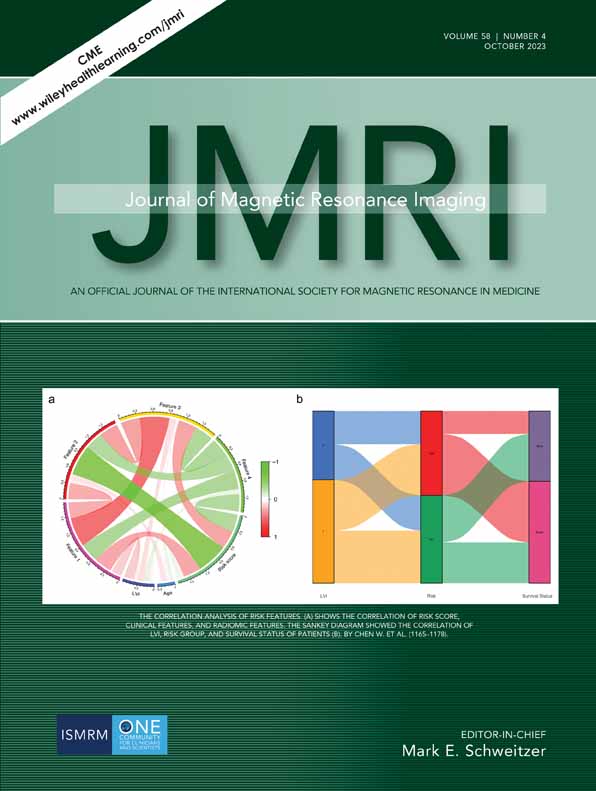Improving Noninvasive Classification of Molecular Subtypes of Adult Gliomas With Diffusion-Weighted MR Imaging: An Externally Validated Machine Learning Algorithm
Yang Guo, Zeyu Ma, and Dongling Pei contributed equally to this work.
Grant sources: This research was supported by the National Natural Science Foundation of China (82273493, 82102149, 82173090, and U1804172), the Excellent Youth Talent Cultivation Program of Innovation in Health Science and Technology of Henan Province (YXKC2022061), the Key Program of Medical Science and Technique Foundation of Henan Province (SBGJ202002062), the Key Program of Medical Science and Technique Foundation of Henan Province (202102310083, 202102310454, 212102310113, 202102310136, and 192102310390).
Abstract
Background
Genetic testing for molecular markers of gliomas sometimes is unavailable because of time-consuming and expensive, even limited tumor specimens or nonsurgery cases.
Purpose
To train a three-class radiomic model classifying three molecular subtypes including isocitrate dehydrogenase (IDH) mutations and 1p/19q-noncodeleted (IDHmut-noncodel), IDH wild-type (IDHwt), IDH-mutant and 1p/19q-codeleted (IDHmut-codel) of adult gliomas and investigate whether radiomic features from diffusion-weighted imaging (DWI) could bring additive value.
Study Type
Retrospective.
Population
A total of 755 patients including 111 IDHmut-noncodel, 571 IDHwt, and 73 IDHmut-codel cases were divided into training (n = 480) and internal validation set (n = 275); 139 patients including 21 IDHmut-noncodel, 104 IDHwt, and 14 IDHmut-codel cases were utilized as external validation set.
Field Strength/Sequence
A 1.5 T or 3.0 T/multiparametric MRI, including T1-weighted (T1), T1-weighted gadolinium contrast-enhanced (T1c), T2-weighted (T2), fluid attenuated inversion recovery (FLAIR), and DWI.
Assessment
The performance of multiparametric radiomic model (random-forest model) using 22 selected features from T1, T2, FLAIR, T1c images and apparent diffusion coefficient (ADC) maps, and conventional radiomic model using 20 selected features from T1, T2, FLAIR, and T1c images was assessed in internal and external validation sets by comparing probability values and actual incidence.
Statistical Tests
Mann–Whitney U test, Chi-Squared test, Wilcoxon test, receiver operating curve (ROC), and area under the curve (AUC); DeLong analysis. P < 0.05 was statistically significant.
Results
The multiparametric radiomic model achieved AUC values for IDHmut-noncodel, IDHwt, and IDHmut-codel of 0.8181, 0.8524, and 0.8502 in internal validation set and 0.7571, 0.7779, and 0.7491 in external validation set, respectively. Multiparametric radiomic model showed significantly better diagnostic performance after DeLong analysis, especially in classifying IDHwt and IDHmut-noncodel subtypes.
Data Conclusion
Radiomic features from DWI could bring additive value and improve the performance of conventional MRI-based radiomic model for classifying the molecular subtypes especially IDHmut-noncodel and IDHwt of adult gliomas.
Level of Evidence
3.
Technical Efficacy
Stage 2.
Conflict of Interest
The authors of this manuscript declare no relationships with any companies, whose products or services may be related to the subject matter of the article.
Open Research
Data Availability Statement
The major data and materials in current study are described in the article or Supplementary Material. Others are available from the corresponding author on reasonable request.




